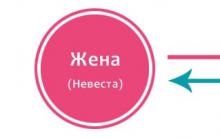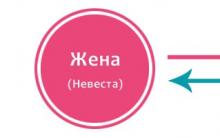1. When developing any social advertising materials (separate layouts, video or audio clips, concepts advertising campaigns) an obligatory stage of work is filling out a brief.
Mandatory elements of the brief for the development of social advertising are:
Description of the situation, statement of the problem (reasons for the existence of the problem; what needs to be changed in the representation, attitude or behavior target audience to solve the problem)
Description of the target audience (socio-demographic characteristics, motivational sphere)
The message that needs to be conveyed to the target audience through advertising communication
Model for evaluating the effectiveness (what characteristics of the communicative and final effectiveness of advertising can be measured at each stage of its preparation and implementation).
- 2. A mandatory step in the development of social advertising is the preliminary testing of advertising materials by the target audience. At the same time, evaluation methods should not only allow drawing conclusions about the effectiveness of the impact of social advertising on the target audience, but also contribute to the formation of recommendations for finalizing advertising to increase its effectiveness. An example is the method of comparative semantic analysis SocResponse.
- 3. Recommendations for the refinement of social advertising related to the process of creating advertising materials should be prepared in the language of characteristics available for implementation by various advertising tools - through elements of graphics, composition, musical accompaniment, color, etc. At the same time, the choice of means for the implementation of recommendations should be carried out by professionals (advertising producers), without the participation of the advertising customer and the target audience.
- 4. The development and implementation of social advertising campaigns should be carried out in accordance with the criteria for the effectiveness of the generated communications. One of the important components of efficiency is taking into account the specifics of advertising media - the rules for effective design in outdoor and print advertising, the principles for developing effective messages for television and radio, as well as online media.
- 5. The optimal scheme for the implementation of social advertising campaigns is the partnership of four main parties - NGOs, the state, business and society, based on the resources provided by all parties and the current federal and regional legislation.
- 6. One of the effective mechanisms for the development of social advertising in Russia is the holding of competitions and festivals of social advertising, in order to formulate and broadcast professional standards in the development of social advertising. An obligatory stage of such events is testing the works by the target audience using special methods to assess the clarity of the message, the motivating power of the work, the relevance of the target audience, etc., as well as by experts (jury members). An important aspect of competitions and festivals of social advertising is the subsequent use of winning works in social programs.
- 7. During the development of social programs and social advertising, it is recommended to conduct public hearings based on research and testing of advertising to improve the effectiveness of solving social problems.
In my work, I decided to take the problem of road safety. SDA - known to every driver, but not everyone follows them. There are a large number of videos on the Internet that call for caution and compliance with such norms as, for example, fasten a seat belt, check the condition of the vehicle, the lion's share of all companies is occupied by warning drivers from driving while intoxicated. In Russia, there was a video with a boy in a wheelchair who was hit by a drunk driver. Below are several posters with examples of social advertising dedicated to the topic of driving: “not everyone who has become a victim of a drunk driver dies. Do not drink and drive".
“46 days in a hospital bed. The speed limit is 25. Slower is better.”
As we can see, all the examples posted speak eloquently about the risks that haunt drivers and their environment. Often, in this kind of advertising like to use children. Because it is assumed that if a person does not think about himself, he will think about his child.
Things are correct, relevant, and everyone knows about it. But often this kind of information goes unnoticed in the general flow of information. 1 Billboard of dozens that everyone meets on their way. Since, in Russia, it is still not so popular, this kind of advertising will simply pass by its client.
Therefore, first of all, we need to make sure that advertising is effective, so that it influences the mind of a person. In the first example, we see the disfigured face of a young girl. The effect in this case
it turns out even more than if they showed a dead person, because the girl has to live with these deformities.
If you pay attention to the ad with a belt, where the year of birth is written and the year of death is questionable, which covers the seat belt. Advertising seems to be veiled, but at the same time it is clear to everyone who sees it.
Such things can also have their effect faster than explicitly showing the victims of accidents.
Unfortunately, all other problems associated with the effectiveness of social advertising are affected by the fact that people have become indifferent to fear, death and disease. Too much violence that is pouring from all sides has made people indifferent to this kind of thing. Despite the fact that everyone understands the importance of all these measures, not everyone follows this. But we still need to follow.
At one time, by order of the traffic police and the administration of the Altai Territory, to develop outdoor advertising urging drivers to comply with traffic rules and be vigilant in different situations.
In this advertisement, one of the standard excuses of drivers to the traffic police “I was in a hurry” was used, the ghost of the girl does not directly blame the driver, which also creates a psychological effect that allows a person to feel that he can cause someone else's misfortune. Posters of this kind were hung all over Altai Territory. With regards to drunk drivers, it is logical that they usually do not care about themselves and others. Therefore, some advertisers offer to approach this problem with humor.
It looks funny, and, as it were, a reminder that drinking and driving threatens with deprivation of rights. It makes no sense to scare people with death or injury, they are used to it and it seems that it will not affect them. Therefore, our goal is also to convey to the client that this problem can also affect him. If he is a driver.
Activities to promote road safety in our country as one of the areas of work to improve the legal culture of road safety has more than half a century of history. At the initial stages of this work, the forms of propaganda of lawful behavior on the road were various publications in newspapers and magazines, radio broadcasts and conversations between traffic police officers and labor collectives car depots. Methods of public influence and control on violators of traffic rules were widely and effectively used. In the second half of the XX century. With the mass distribution of television, this resource has also become widely used in this work. However, with the growth in the number of individual owners Vehicle such forms of influence as various conversations of employees of the State traffic inspectorate, partly lost their effectiveness, and as a result of the collapse of socialist ideology, the collapse of the USSR and large-scale socio-economic transformations of the 90s of the XX century. in fact, the mechanism of public influence on violators that existed before became completely ineffective. The study of foreign practical experience, as well as research by domestic scientists shows that in market conditions one of effective ways road safety promotion is social advertisement aimed at shaping the legal culture of road users, as well as stereotypes of lawful behavior among drivers and pedestrians. The main purpose of social advertising in the field of traffic is to ensure the safety of its participants and compliance with the rules of the road. Social advertising is an important way to improve the legal and general culture of drivers and pedestrians, but it must be recognized that at present its capabilities are far from being used to the full extent. In such a specific area as road traffic, for several decades, an increase in the aggressive component in the advertising of all products related to by car. This is reflected in various advertising materials that contain arguments in favor of a "sporty management style", which in many cases is perceived by the human subconscious as an aggressive style of behavior. At the same time, materials that would pay attention to such aspects of traffic as the economy of transport or mutual respect for road users are much less common. An analysis of modern social advertising in the field of road safety shows that for the most part its texts are built according to the pattern of intimidation and excitation of negative emotions. For example: "driving a car in a drunken mind, you run the risk of remaining in a solid memory", "these horsepower needs at least one head", etc. Even despite the certain mentality of Russians, it seems that the approach based only on intimidation can be effective. Such advertising is rejected by a person under the influence of psychological defense mechanisms. It seems that a more effective approach is to create templates of positive advertising aimed at setting "cooperative behavior" in drivers, since negative types of advertising destroy this installation. In such social advertising, it seems appropriate not to call, but indirectly and delicately show the expediency of observing the Rules of the Road, pointing out, for example, the insignificance of gain in time in case of violation speed limit. It must be remembered that traffic culture advertising has a certain socio-psychological specificity, differing significantly from various kinds of commercial advertising. At the same time, in the case of social advertising dedicated to road safety, we are talking about social values, such as mutual respect on the road, caution when driving. A completely different situation arises in the case of commercial advertising- there, a certain group of people are offered specific material values. Increasing the road discipline of road users is more effectively carried out in stages, starting with focusing on the need to take care of yourself and your health. At the next stage, an attempt can be made to call for compliance with the Rules of the Road with the help of social advertising. At the same time, it should be tactful and gentle in order to minimize possible reaction in the form of a "spirit of contradiction". It appears that effective technique may be a reformulation of the requirements of the Rules of the Road from the language of the document to a more understandable language (without changing the meaning of the phrase). When developing such promotional materials of a social orientation, it seems necessary to verbally or visually demonstrate the benefits that drivers and pedestrians follow the Rules of the Road. An equally important area of work in the field of social advertising in the field of road safety is the formation of the image of the "ideal driver" and the orientation of citizens to increase their self-esteem and self-esteem in their lawful behavior. An important aspect of this work is the placement of social advertising dedicated to road safety. Although the most obvious location for such advertising is roadside, it is far from the only place for its placement. Similar advertisements can be placed at bus stops public transport, in large shopping malls in the form of posters or multimedia clips on special video panels. Currently, one of the effective places for advertising is the Internet. Thus, social advertising, taking into account the basic psychological processes and mechanisms of human mental activity, is a real way to increase conflict-free and traffic culture, which is one of the components of the work to reduce accidents and road traffic injuries on the roads of Russia.
11.09.2013What is the difference between a good driver and a bad one? Despite the common answers, such as the ability to enter a sharp turn at a speed of "80" or drive from Kyiv to Odessa in 3 hours (such a record was set by one of the people's deputies, grossly violating all conceivable and unthinkable traffic rules), we are of the opinion that a good driver - one that does not get into an accident for many years. And neither through their own fault, nor through the fault of another road user. Of course, there are exceptions when there is no way to avoid an accident. But in most cases, before the moment of collision, one driver believes that he will slip, and the second - that no one has slipped yet. As a result, an overly principled driver, just like a dashing one, spends several hours of his life, first on registering an accident, and then on restoring the car.
Is it possible to drive without accidents at all? "Today" found three drivers, each of whom over the past 10 years has not been in a single accident, although he "runs" 25-50 thousand km per year. Dmitry is a professional truck driver who drives a truck tractor (drives along the highway), Sergey - Sales Representative(driving around the city), and Aleksey is a university teacher (he travels from home to work, and goes to the country for the weekend). We have collected tips from them on how to avoid accidents over the years.
Note that in communication they are all calm people, but without any hint of inhibition. Our heroes admit that they make small mistakes from time to time. traffic violations like almost all Ukrainian drivers. They consider their main “secret” to be that they are not distracted while driving for any extraneous actions, and they also do not take risks once again by overtaking in closed turns or slipping into a “pocket” among cars in the stream. After all, the situation on the road changes every not even a second, but a fraction of a second - any distraction or dangerous maneuver can lead to a serious accident with a fatal outcome. Let's add that today the accident rate on our roads goes off scale - every two hours in Ukraine one person dies under the wheels of a car.
air shield
“The greater the distance between my and neighboring cars, the safer the ride on the highway,” says trucker Dmitry. The higher the flow rate, the greater the distance you need to keep to the car in front: if something suddenly breaks in it or, for example, the driver becomes ill and the car stops abruptly, it should be possible to stop safely. On wet roads, the distance should be increased by a third of the usual.
At the same time, Dmitry adds that the location of vehicles on the road (it is not in vain that the traffic rules require leaving the leftmost lane free) also matters - it is optimal to drive in the middle lane, trying to take such a place that there is a protective space on the right, left, front and rear. In the event that the traffic situation changes dramatically (for example, a child jumps out onto the road) and there is no opportunity to brake safely, the driver will have a chance to turn the steering wheel left or right to safely bypass the “obstacle”. If the side seat is occupied, there will simply be nowhere to steer and a traffic accident cannot be avoided.
Reading other people's thoughts and forecasting
Modern upscale driving style - active. The driver must be able to constantly control the traffic situation, feel the car's behavior and evaluate its capabilities in specific conditions, accurately determine the quality of wheel adhesion and, of course, predict the car's behavior on various surfaces. He must see and predict the development of the situation always one, or better - several steps ahead.
“When driving in the city, I always put myself in the place of the surrounding drivers and look at the road not only with my own, but also with their eyes. This allows me to understand their desires and predict maneuvers,” says Sergey. For example, it is logical to predict that the driver, when choosing a lane for movement, will prefer to change lanes to the most free one, but at the same time he will always strive to take the leftmost one - as the fastest one. It is not difficult for an experienced driver to predict the probability of an accident - it grows if one of the drivers rushes from row to row or crawls unthinkably.
Accidents: top 5 reasons
According to the official statistics of the Ukrainian traffic police, among the causes of road accidents with serious consequences, speeding is in the first place. On the second and third - violations of the rules of passage of intersections and pedestrian crossings. The fourth and fifth places are occupied by such violations as driving into the oncoming lane and driving while intoxicated.
Interestingly, worldwide (and here too), drivers aged 18 to 30 are twice as likely to get into an accident compared to older experienced people. Among the reasons for this state of affairs, the American Highway Safety Foundation cites a set of SMS messages while driving, conversations without a headset, and the desire to get frisky inherent in young people.
Economic drive
A safe driving style, combined with economical driving techniques, not only avoids accidents, but also saves on fuel. We've put together 5 tips on how to cut costs by a third.
EGG RULE. Imagine that between your foot and the gas pedal is a fragile egg. Your task is not to crush it, that is, to press the gas pedal gently and smoothly.
START SMARTLY. When accelerating, immediately shift to higher gears. With delicate handling of the gas pedal, you can absolutely calmly move in traffic and in 5th gear at a speed of 60-70 km / h. If you need to accelerate, for example to overtake, briefly shift into a lower gear.
DO NOT RUN. For economical driving, the speed should not exceed 90 km / h. This style is especially relevant for trips over long distances.
Note that dynamic driving can be considered an economical alternative style if a number of conditions are met. For example, smooth accelerations at the lowest possible rpm are replaced by short, vigorous accelerations. This is followed by a long "run-out" with little or no pressing the gas pedal.
WITHOUT EXCESSIVE MOVEMENTS. You need to get into the rhythm of traffic flow and avoid unnecessary acceleration and braking. Anyone who accelerates sharply before a red traffic light, in order to start braking literally in a second, doubles fuel consumption. It should be remembered that the larger the engine size, the more fuel consumption depends on the driving style. For example, if you "ignite" on a car with a three-liter engine, on which, in a normal rhythm of movement, the average consumption does not exceed 10-12 liters per hundred, you can easily double it, reaching 25 liters.
AUTO - OK. A technically sound car - from the correct tire pressure to timely replaced spark plugs, oil with filters and high-quality fuel - is the key to success. After all, even some little thing can lead to overspending up to 30%.
Secrets of safe overtaking
“When traveling to the dacha, you constantly have to bypass trucks and agricultural machinery on the highway, because they move too slowly and smoke very much. For several years I have seen enough of unsuccessful overtaking options - each time the driver either starts a maneuver, taking into account not the speed of the nearest car in the oncoming lane, but the distance, or makes it in a closed turn, ”Aleksey shares his experience. For himself, he developed an algorithm that allows you to bypass the slug without unnecessary nerves.
STARTING OVERTAKING.“In order to have an advantage in speed, you need to start accelerating in advance on your side. And only after making sure that the oncoming lane is free, and the road itself is straight (there is no likelihood that the section allowed for overtaking will end abruptly before the closed turn. - Ed.), start maneuvering. And you need to do this in a low gear, for example, in 3rd, ”says the driver.
COMPLETION OF OVERTAKING. Aleksey adds that during overtaking, you should not cling to the overtaken, provoking him to rash actions, and having overtaken, you should not immediately occupy your lane. It is better to stretch a little forward so as not to cut.
You can never overtake "for company" with another car: it significantly limits visibility, and in the event of an oncoming car, the front one will have time to quickly return to the right lane, and the next one behind it (that is, yours) will not.
IF THEY OVERTAKE YOU. Never stop a car from behind from overtaking. On the contrary, it is better to help him. After all, the track is not a racing track, and the drivers are not rivals, but colleagues.
So, if the driver behind the car turned on the left turn, look ahead and evaluate the traffic situation. In the event that the path is clear, take a little to the right and turn on the right flasher. This will inform the driver that you have guessed the intention to overtake you and are ready to assist. And then he will safely bypass you and, perhaps, turn on the “emergency gang” for 2-3 cycles: his rear direction indicators will wink at you, thanking you for your help.
If there is an obstacle ahead, it is better to inform the rear driver about this by turning on the emergency gang. Or if you also want to make a maneuver (for example, turn around), turn on the turn signal.
Beware of "standard" accidents
Many accidents in the city are "accidental" - they did not occur because the driver deliberately violated the rules, but because he misjudged the traffic situation and ultimately made the wrong decision. With the help of Evgeny Serednitsky, director of the school for improving driving skills, we analyzed the causes of the three most common accidents.
DEPARTURE TO THE MAIN. The driver in front began to move, but he doubted whether he would have time to leave, and suddenly braked. The driver behind him sees that the car in front of him has gone. He too began to move off and looked to the left to make sure that he was not interfering with those traveling on the main road. And he drives into a car that has stopped.
Tip: Don't look left until the car in front of you has left.
MANEUVERS IN THE STREAM. The habit of constantly rebuilding from row to row can end badly. Drivers often cut trucks that have longer stopping distances. Emergency situation can also occur during mutual rebuilding - when two cars got into the same "pocket". The one who is to the right will be right (according to clause 10.3 of the SDA), but this does not save from injury as a result of an accident.
Tip: Pause for a fraction of a second before you start rebuilding.
REVERSE. Often the driver, when maneuvering in a narrow yard, backs up (in the passage between houses or in the gateway). But the other driver does not know about this, who immediately joined the first one and literally “supported” him in the blind zone. The result is an accident, and the question of guilt depends only on the testimony of witnesses.
Tip: before starting the movement, ask a passenger or a bystander to follow the safety of the maneuver. Behind, after all, there can be not only a car, but also small children ...
Always be on the lookout
The drivers we interviewed say that they are always driving in a special state - the body is relaxed, and the brain automatically calculates the options for the development of the traffic situation. As a result, as soon as a potential threat arises, the driver is ready for it.
For example, when passing by a public transport stop, you need to be prepared for the fact that a pedestrian suddenly appears because of a standing bus (a few meters before the dangerous area, it is enough to move your foot from the gas pedal to the brake pedal - the speed is not lost, but the stop of the car happen a fraction of a second faster). Or to the fact that the car approaching the intersection will not slow down, but will try to slip through the red light and leave in front of you (you need not start from a place on the green, but look around for a split second). You also need to take into account that a neighboring car can “cut” you or slow down in front of you - you always need to be ready to use counter-emergency techniques.
By replaying situations like this in your head, you will learn to always leave enough room for maneuver. It is very important to maintain a safe distance, not only when moving at a constant speed, but also when accelerating, and most importantly, when braking. For example, when seeing a car from behind, do not brake sharply, but stretch forward a little - if the driver behind him gapes a little, he will have a few meters in reserve to prevent an accident.
We also note the importance of the review: you always need to navigate the mirrors, analyzing the situation not only in front of you, but also behind (360 degrees).
You also need to take into account the interests of other road users when parking. Before you get out of the car, ask yourself a few questions. Have you limited visibility by parking your car at or in front of a secondary road? Will the pedestrian be able to safely cross the road after you parked the car in front of the zebra? Is there enough room for a truck to drive between the curb and your car?
In Russia, about 1,000 children die on the roads every year and about 20,000 are injured. In most cases, children were transported in a car without special car seats. Many parents consider a car seat to be an expensive and useless item that can be easily dispensed with. But at the same time, they buy their children a lot of extra toys, without thinking about their cost.
It was decided to remind about child mortality in New Zealand right on the street. But not a billboard or a sign. Along the roads, near the fences, at the entrance to the shops, cardboard figures of a little sad girl appeared. During the day, people could meet this girl more than once or twice. And two weeks later, a road sign appeared in her hands with the inscription: “The children you killed never leave you. Slow down near schools."
One of the social advertisements is based on a documentary filmed by an English schoolboy in 2005. He filmed on a mobile phone as he walked home from school with friends. They joked, fooled around, and then one of them was hit by a car, because he simply did not look to the left while crossing the road. And the camera mobile phone accidentally filmed this tragedy. Naturalistic shocking footage. At the end of the video, it is summarized that in the UK, 55 teenagers a week regret that they were inattentive on the road. In Russia, this figure is several times higher, although there is no exact data: in our country, such detailed statistics are not kept.
In the Czech Republic, in an unusual way, they are trying to draw the attention of drivers to the problem of child injuries on the roads. The purpose of this outdoor advertising- to show drivers that children who get carried away sometimes continue to play on the roadway, and drivers should always be ready for this. (picture 1)
Picture 1.
To explain simple things to adults, one has to resort to complex constructions like this one. The purpose of this outdoor illustration is to clearly show that it is necessary to buckle up not only in the front seats, but also in the rear. (picture 2)

Figure 2.
There are social ads calling for speed limits. It is still an original move - to agitate careful driving with the help of humor. Usually, such concepts as misfortune, grief and death are used for this. Although some experts argue that advertising showing the consequences of severe accidents is no longer so effective. In addition, most people, even after watching such videos, are of the opinion that this will never happen to them.
An example of a PSA about speed compliance: “Even this slight decrease in speed by 5 km / h can save someone's life. The statistics are such that when hit at a speed of 65 km / h in 80% of cases, a pedestrian dies. When hit at a speed of about 50 km / h in 80% of cases, he remains alive. Your child is also a pedestrian” (Figure 3).


Figure 4
The bulk of the commercials and posters of the traffic police are made in dark colors, which most people associate with the pain and bitterness of the loss of loved ones.
Drivers themselves and their negligent attitude to safe driving pose a great danger on the road. Failure to comply with the speed limit, not wearing seat belts, inattention, alcohol, lack of a child seat - all this can be fatal. According to research conducted by the Natural Agency, in 42% of cases, people do not fasten their seat belts because the belt “interferes” with them. It turns out that the threat of wrinkling their clothes is more serious for them than the threat of losing their lives.
“Fasten your seat belt if you want to survive”, “Slow down and they will wait for you”, “Stop the drunk - save your life”, “Be a man: there are living people in iron cars” - these are some of the many slogans of social advertising.
At the beginning of June 2009, a series of billboards with slogans will appear on the streets of Tyumen: “Children? Buckle up? Why?”, “Our daughter is already quite big. She never wears her seat belt”, “Our son cries in the baby seat. It’s easier for us to pay 500 rubles.” Billboards designed for our region by a well-known Russian designer Artemy Lebedev. Their goal is to make drivers think, as A. Lebedev himself writes: "Turn on your head and get indignant at the posing of the question." The State traffic inspectorate hopes that there will be more indignant than indifferent. Those who do not think about the safety of children will be fined by inspectors for violating the Rules for transporting children. For 500 rubles. Daily. The state traffic inspectorate of the Tyumen region declares: “Every child's life is dear to us. Think about it too: this year our child passengers received the following injuries in road accidents: an open craniocerebral injury, severe brain contusion, rupture of the spleen, fracture of the pelvis, leg, forearm, collarbone, laceration of the forehead, concussion of the brain , stress, etc. (Figure 5).
The debate about how to get people to obey the rules of the road has been going on for a long time. They said that drivers need to be careful while driving, pedestrians should be careful on the road. There were calls to fasten seat belts, to carry children in child seats. But, practically since the beginning of mass motorization, it became clear that the prevention of traffic accidents should not be limited only to calls.
Those who previously stimulated the development of trade have come to the service of promoting safe road traffic. Advertising agencies became the largest authors of "social advertising". Their works no longer call for - they make you think, and sometimes even shock. A small selection of videos and posters gives some insight into how Road Safety PSA has evolved around the world.
Movie almanac "Nowhere to hurry"




 Always follow the rules for crossing the road
Always follow the rules for crossing the road


 Wait for traffic to come to a complete stop before crossing.
Wait for traffic to come to a complete stop before crossing.
Road safety is up to you.  You don't see what you don't expect.
You don't see what you don't expect.
.Expect the unexpected.  The percentage of fatalities without a seat belt is 56%.
The percentage of fatalities without a seat belt is 56%.
Don't be stupid, be safe.  Thanks for letting me through.
Thanks for letting me through.
Always come to a complete stop before a pedestrian crossing.  Get some sleep before you drive.
Get some sleep before you drive. Don't let your friendship die on the road.
Don't let your friendship die on the road.
Follow your comrades.
 At a speed of 60 km/h, the braking distance is 8 meters longer than at 50 km/h.
At a speed of 60 km/h, the braking distance is 8 meters longer than at 50 km/h.
 Not included turn signal - 27 victims per day.
Not included turn signal - 27 victims per day.
In the city, not only cars get into accidents.  Don't talk to him on the phone while he's driving.
Don't talk to him on the phone while he's driving.  Crossing a red light - 15 victims per day.
Crossing a red light - 15 victims per day.
In the city, not only cars get into accidents.

 For children, the road looks different.
For children, the road looks different.
Parents of children injured on the roads. For children, the road looks different.
For children, the road looks different.
Parents of children injured on the roads.
Download video and cut mp3 - we make it easy!
Our site is a great tool for entertainment and recreation! You can always view and download online videos, funny videos, videos hidden camera, feature films, documentaries, amateur and home videos, music videos, videos about football, sports, accidents and disasters, humor, music, cartoons, anime, series and many other videos completely free of charge and without registration. Convert this video to mp3 and other formats: mp3, aac, m4a, ogg, wma, mp4, 3gp, avi, flv, mpg and wmv. Online Radio - radio stations to choose from by country, style and quality. Online Jokes are popular jokes to choose from by style. Cutting mp3 to ringtones online. Converter video to mp3 and other formats. Online TV - these are popular TV channels to choose from. Broadcasting of TV channels is absolutely free in real time - broadcast online.











How to make a bird costume with your own hands Carnival bird costume
Scenario for 25 years girl cool houses
Examples of serious nominations for rewarding employees
The script for the anniversary of the girl (young woman) "A star named ...
Comic nominations for a corporate party